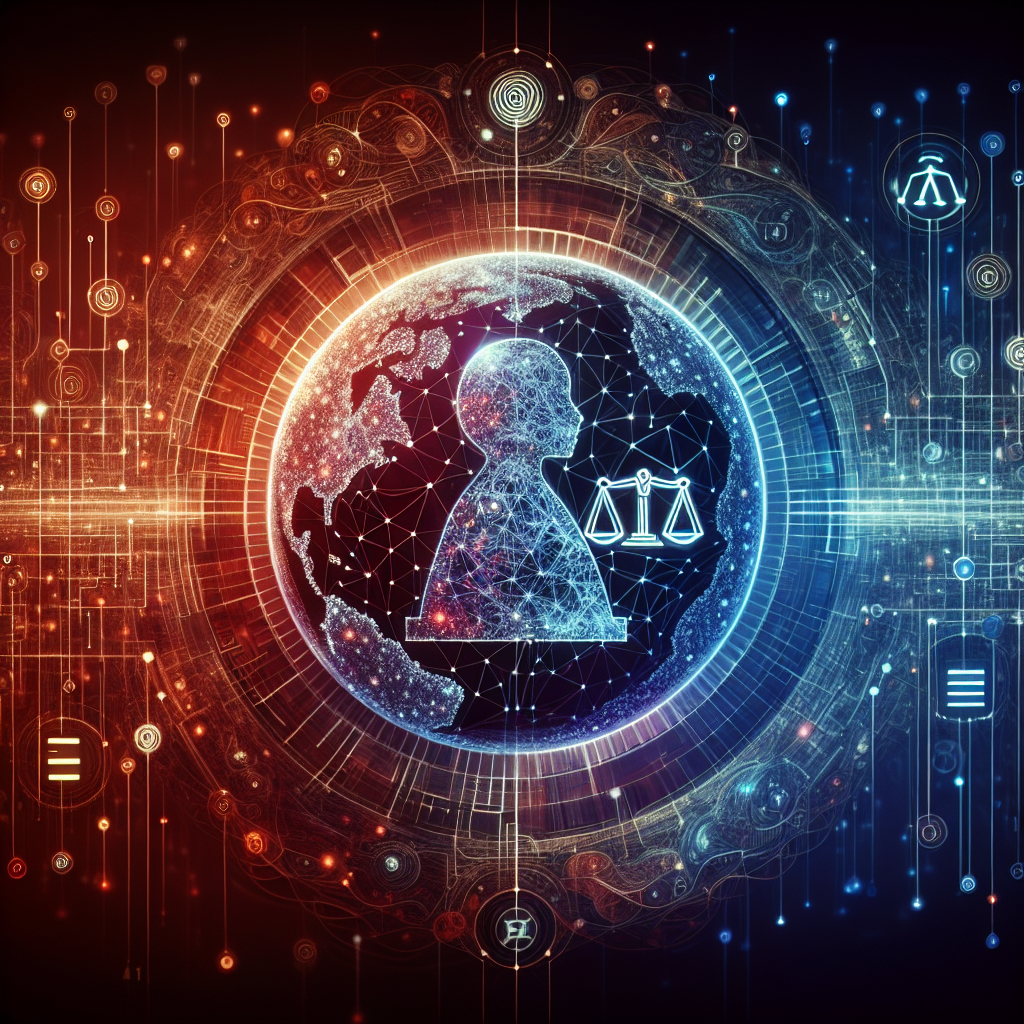The Future of AI Automation in Human Rights Advocacy
As technology continues to advance at a rapid pace, the role of artificial intelligence (AI) in various industries is becoming increasingly prominent. One area where AI has the potential to make a significant impact is in human rights advocacy. By leveraging AI automation, human rights organizations can streamline their processes, improve efficiency, and better address the myriad challenges facing vulnerable populations around the world.
AI automation in human rights advocacy involves the use of algorithms and machine learning to analyze large amounts of data, identify patterns and trends, and generate insights that can inform advocacy efforts. This technology has the potential to revolutionize the way human rights organizations operate, enabling them to more effectively monitor and document human rights abuses, advocate for policy change, and hold perpetrators accountable.
One of the key advantages of AI automation in human rights advocacy is its ability to process vast amounts of data quickly and efficiently. Human rights organizations often collect large quantities of data from various sources, including eyewitness accounts, satellite imagery, and social media posts. Analyzing this data manually can be time-consuming and resource-intensive, but AI algorithms can automate the process, allowing organizations to identify trends and patterns that may not be readily apparent to human analysts.
AI automation can also help human rights organizations to more effectively monitor and document human rights abuses. For example, AI algorithms can be trained to analyze satellite imagery to detect signs of human rights violations, such as mass graves or illegal detention facilities. By automating this process, organizations can monitor human rights violations in real-time and respond more quickly to emerging crises.
In addition, AI automation can help human rights organizations to advocate for policy change more effectively. By analyzing data on human rights abuses and their underlying causes, AI algorithms can generate insights that can inform advocacy campaigns and help organizations to make evidence-based recommendations to policymakers. This can help to ensure that advocacy efforts are targeted and strategic, leading to more impactful outcomes.
Furthermore, AI automation can help human rights organizations to hold perpetrators of human rights abuses accountable. By analyzing data on human rights violations and identifying patterns of abuse, AI algorithms can help organizations to build cases against perpetrators and provide evidence to support legal action. This can be particularly valuable in contexts where access to justice is limited, as AI automation can help to bridge the gap between evidence and accountability.
Despite the potential benefits of AI automation in human rights advocacy, there are also challenges and risks that need to be addressed. One of the key concerns is the potential for bias in AI algorithms, which can lead to inaccurate or discriminatory outcomes. Human rights organizations must be vigilant in ensuring that their algorithms are transparent, accountable, and free from bias, and that they are used in a manner that respects the rights and dignity of all individuals.
Another challenge is the potential impact of AI automation on human rights workers themselves. As AI technology becomes more prevalent in human rights advocacy, there is a risk that human rights workers may be displaced or marginalized by automation. Organizations must therefore ensure that their staff are trained and equipped to work effectively with AI technology, and that they are supported in adapting to the changing landscape of human rights advocacy.
In conclusion, the future of AI automation in human rights advocacy holds great promise for advancing the cause of human rights around the world. By leveraging the power of AI algorithms and machine learning, human rights organizations can improve their efficiency, effectiveness, and impact, leading to better outcomes for vulnerable populations and greater accountability for perpetrators of human rights abuses. However, it is essential that organizations approach AI automation in a responsible and ethical manner, ensuring that it is used in a way that upholds the values of human rights and respects the dignity of all individuals.
FAQs
Q: How can AI automation help human rights organizations to monitor and document human rights abuses?
A: AI automation can analyze large amounts of data quickly and efficiently, allowing organizations to identify patterns and trends that may not be readily apparent to human analysts. This can help organizations to monitor human rights abuses in real-time and respond more quickly to emerging crises.
Q: What are some of the challenges and risks associated with AI automation in human rights advocacy?
A: One of the key concerns is the potential for bias in AI algorithms, which can lead to inaccurate or discriminatory outcomes. Organizations must ensure that their algorithms are transparent, accountable, and free from bias, and that they are used in a manner that respects the rights and dignity of all individuals.
Q: How can human rights organizations ensure that their staff are prepared to work effectively with AI technology?
A: Organizations must provide training and support to their staff to ensure that they are equipped to work with AI technology effectively. This may involve providing technical training, developing new skills, and fostering a culture of innovation and adaptation within the organization.

